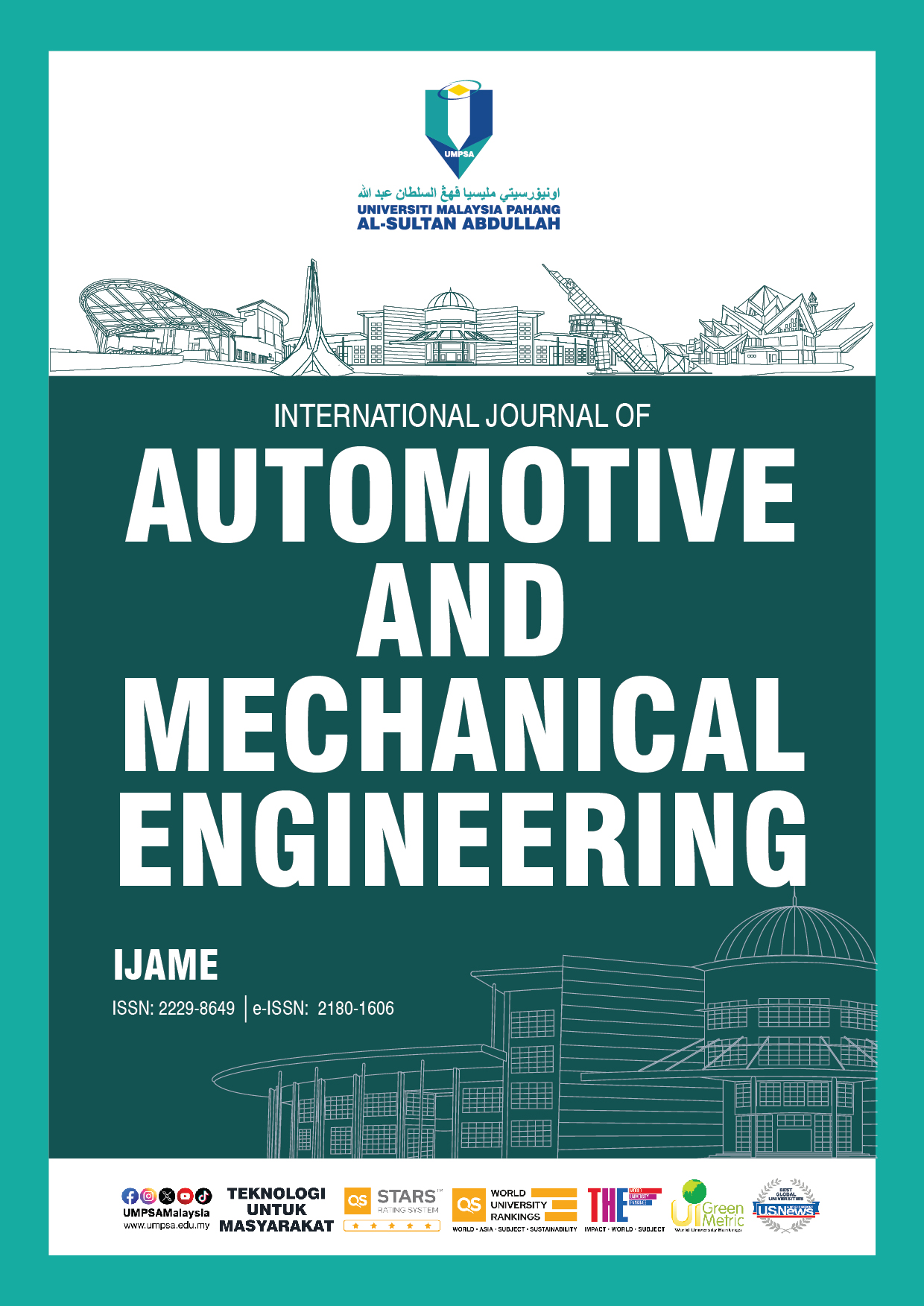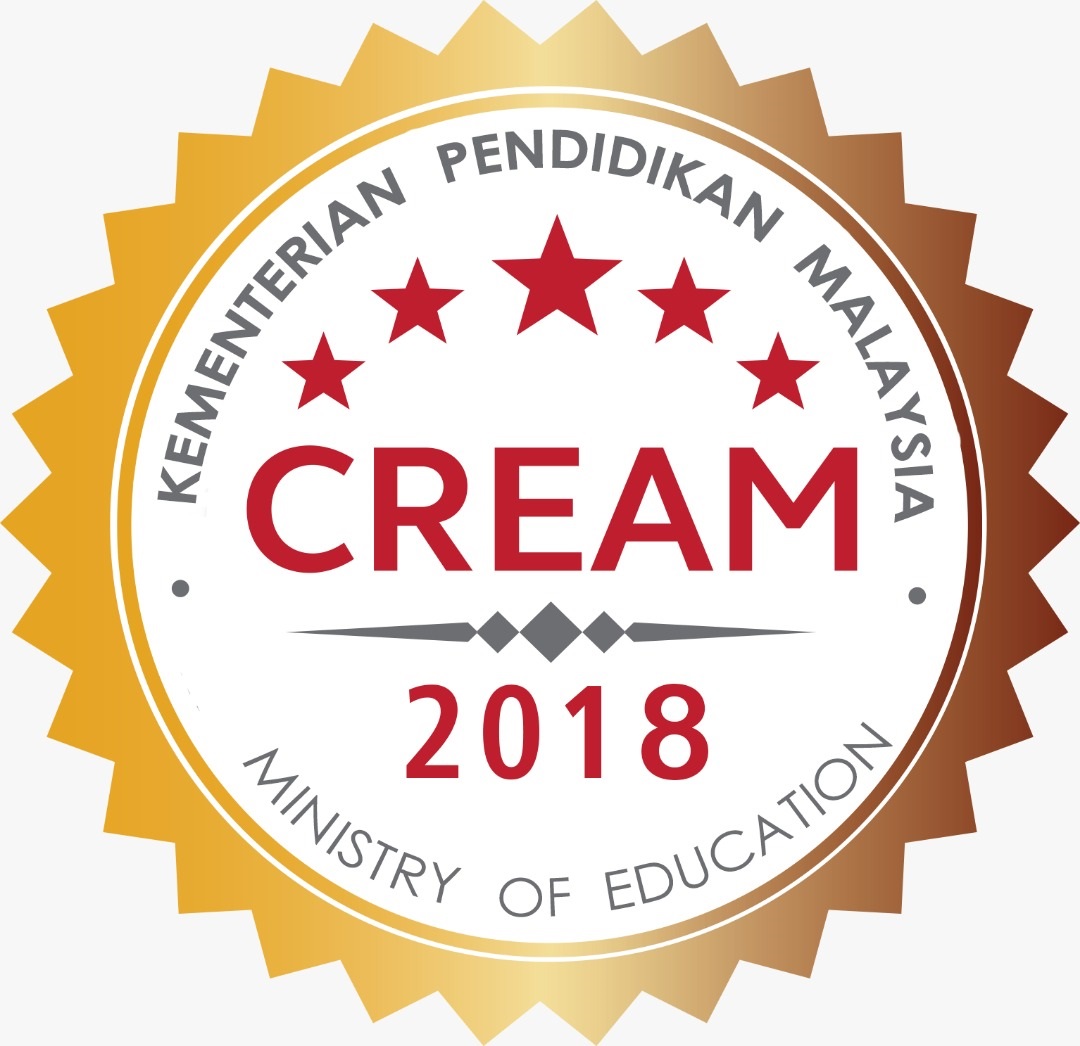Mechanical Characterization and TOPSIS-Based Selection of Hybrid Natural Fiber-Cenosphere Reinforced Polymer Composites for Automotive Structures
DOI:
https://doi.org/10.15282/ijame.22.1.2025.12.0929Keywords:
Hybrid composites, Jute, Kenaf, Coir, CenosphereAbstract
This study evaluates a novel composite material for automobile structural applications, consisting of a polymer-based matrix material reinforced with hybrid natural fibers (Jute, Kenaf, Coir) and cenospheres. Natural fibers provide sustainability and lightweight benefits, while cenospheres enhance mechanical properties and reduce density. We assess tensile, flexural, and impact strengths, examining the effects of 2 vol% and 4 vol% cenosphere concentrations. Scanning electron microscopy analyzes microstructural features and interfacial bonding. Results indicate that kenaf-reinforced laminates exhibit an 86.36% higher tensile strength than jute and are 2.73 times stronger than coir composites. While 2% cenosphere enhances tensile and flexural properties, 4% improves impact strength across all composites. Notably, 2% cenosphere boosts tensile strength by 28%, 23.4%, and 28.57% for jute, kenaf, and coir, respectively. Our findings highlight the synergistic effects of hybrid fibers and cenosphere reinforcements, with the Technique for Order of Preference by Similarity to Ideal Solution (TOPSIS) approach identifying the Kenaf/Epoxy composite with 4 vol% cenosphere as the superior option for practical applications. This research contributes innovative, sustainable solutions for enhancing automotive structural performance while minimizing weight.
References
[1] S. Agrawal, K. K. Singh, and P. K. Sarkar, “Impact damage on fiber-reinforced polymer matrix composite - A review,” Journal of Composite Materials, vol. 48, no. 3, pp. 317–332, 2014.
[2] R. S. Rana, A. Nigrawal, S. Rana, and R. Purohit, “Design and development of epoxy hybrid composite gears for low-powered application,” Advances in Materials and Processing Technologies, vol. 6, no. 2, pp. 380–389, 2020.
[3] M. Ramesh, “Kenaf (Hibiscus cannabinus L.) fiber based bio-materials: A review on processing and properties,” Progress in Materials Science, vol. 78–79, pp. 1–92, 2016.
[4] V. Mahesh, V. Mahesh, D. Harursampath, S. Joladarashi, and S. M. Kulkarni, “Development of sustainable jute/epoxy composite and assessing the effect of rubber crumb on low velocity impact response,” Journal of Natural Fibers, vol. 19, no. 15, pp. 12268–12279, 2022.
[5] N. U. Aithal, V. Mahesh, and V. Mahesh, “Harnessing of waste cenosphere in development of natural/synthetic and rubber core sandwich composite and its mechanical characterization,” Biomass Conversion and Biorefinery, vol. 14, pp. 25057–25069, 2023.
[6] S. Supreeth, B. Vinod, and L. J. Sudev, “Influence of fiber length on the tribological behaviour of short PALF reinforced bisphenol-a composite,” International Journal of Engineering Research and General Science, vol. 2, no. 4, pp. 825–830, 2014.
[7] D. L. Majid, Q. Mohd Jamal, and N. H. Manan, “Low-velocity impact performance of glass fiber, kenaf fiber, and hybrid glass/kenaf fiber reinforced epoxy composite laminates,” BioResources, vol. 11, no. 4, pp. 8839–8852, 2018.
[8] M. K. Marichelvam, K. Kandakodeeswaran, and P. Manimaran, “Investigation of mechanical and morphological analysis of natural fiber hybrid composites,” Biomass Conversion and Biorefinery, vol. 14, no. 19, pp. 23591–23604, 2023.
[9] U. S. Pawar, S. S. Chavan, and D. D. Mohite, “Synthesis of glass FRP-natural fiber hybrid composites (NFHC) and its mechanical characterization,” Discover Sustainability, vol. 5, no. 1, p. 44, 2024.
[10] R. Prem Kumar, M. Muthukrishnan, and A. Felix Sahayaraj, “Effect of hybridization on natural fiber reinforced polymer composite materials – A review,” Polymer Composites, vol. 44, no. 8, pp. 4459–4479, 2023.
[11] P. P. B. Karthikeyan, R. R. Raja, and M. Vannan, “Mechanical, thermal and morphological analysis of hybrid natural and glass fiber ‑ reinforced hybrid resin nanocomposites,” Biomass Conversion and Biorefinery, vol. 14, pp. 4941–4955, 2024.
[12] D. Athith, M.R. Sanjay, T.G. Yashas Gowda, P. Madhu, G.R. Arpitha, B.Yogesha et al., “Effect of tungsten carbide on mechanical and tribological properties of jute/sisal/E-glass fabrics reinforced natural rubber/epoxy composites,” Journal of Industrial Textiles, vol. 48, no. 4, pp. 713–737, 2018.
[13] V. K. Patel and A. Dhanola, “Influence of CaCO3, AL2O3 and TiO2 microfillers on physico-mechanical properties of Luffa cylindrica / polyester composites,” Engineering Science and Technology, an International Journal, vol. 19, no. 2, pp. 676–683, 2016.
[14] K. Shahapurkar, M. Doddamani, G. C. Mohan Kumar, and N. Gupta, “Effect of cenosphere filler surface treatment on the erosion behavior of epoxy matrix syntactic foams,” Polymer Composites, vol. 40, no. 6, pp. 2109–2118, 2019.
[15] A. K. Singh, B. Patil, N. Hoffmann, B. Saltonstall, M. Doddamani, and N. Gupta, “Additive manufacturing of syntactic foams: Part 1: Development, properties, and recycling potential of filaments,” JOM: the journal of the Minerals, Metals & Materials Society, vol. 70, no. 3, pp. 303–309, 2018.
[16] S. Waddar, J. Pitchaimani, and M. Doddamani, “Effect of thermal loading on syntactic foam sandwich composite,” Polymer Composites, vol. 41, no. 5, pp. 1774–1784, 2020.
[17] B. K. Prabhu, S. Dudse, and S. M. Kulkarni, “Statistical analysis of flexural modulus of cenospheres-reinforced, recycled poly(ethylene terephthalate) using Taguchi method,” Journal of Elastomers & Plastics, vol. 46, no. 7, pp. 611–622, 2014.
[18] B.R Bharath Kumar, S.E. Zeltmann, M. Doddamani, N. Gupta, S. Uzma, Gurupadu and R.R.N. Sailaja, “Effect of cenosphere surface treatment and blending method on the tensile properties of thermoplastic matrix syntactic foams,” Journal of Applied Polymer Science, vol. 133, no. 35, pp. 1–15, 2016.
[19] B. Suresha, G. Chandramohan, Siddaramaiah, and T. Jayaraju, “Influence of cenosphere filler additions on the three-body abrasive wear behavior of glass fiber-reinforced epoxy composites,” Polymer Composites, vol. 29, no. 3, pp. 307–312, 2008.
[20] D. Rajkumar, V. Mahesh, S. Joladarashi, and S. M. Kulkarni, “Parametric study on impact behaviour of sisal and cenosphere reinforced natural rubber-based hybrid composites: FE approach,” Materials Today: Proceedings, vol. 46, no. 17, pp. 8767–8771, 2021.
[21] N. U. Aithal, V. Mahesh, V. Mahesh, and S. A. Ponnusami, “Development and mechanical characterization of cenosphere ‑ reinforced CFRP and natural rubber core sandwich composite,” Journal of the Brazilian Society of Mechanical Sciences and Engineering, vol. 45, no. 9, p. 498, 2023.
[22] K. Pratheesh, P. Narayanasamy, R. Prithivirajan, T. Ramkumar, P. Balasundar, S. Indran et al., “Cenosphere filled epoxy composites: structural, mechanical, and dynamic mechanical studies,” Biomass Conversion and Biorefinery, vol. 14, no. 22, pp. 28893–28900, 2023.
[23] H. Jena, M. K. Pandit, and A. K. Pradhan, “Effect of cenosphere on mechanical properties of bamboo–epoxy composites,” Journal of Reinforced Plastics and Composites, vol. 32, no. 11, pp. 794–801, 2013.
[24] A. Shanian and O. Savadogo, “A material selection model based on the concept of multiple attribute decision making,” Materials & Design, vol. 27, no. 27, pp. 329–337, 2006.
[25] R. V. Rao, “A decision making methodology for material selection using an improved compromise ranking method,” Materials & Design, vol. 29, pp. 1949–1954, 2008.
[26] V. K. Patel, S. Chauhan, and J. K. Katiyar, “Physico-mechanical and wear properties of novel sustainable sour-weed fiber reinforced polyester composites,” Materials Research Express, vol. 5, no. 4, p. 045310, 2018.
[27] V. K. Patel and N. Rawat, “Physico-mechanical properties of sustainable Sagwan-Teak Wood Flour / Polyester Composites with / without gum rosin,” Sustainable Materials and Technologies, vol. 13, pp. 1–8, 2017.
[28] T. S. Sandeep Kumar, Patel V K, Mer KKS, Fekete Gusztav, “Influence of woven bast-leaf hybrid fiber on the physio-mechanical and sliding wear performance of epoxy based polymer composites,” Materials Research Express, vol. 5, p. 105705, 2018.
[29] B. Vijaya Ramnath, S. Junaid Kokan, R. Niranjan Raja, R. Sathyanarayanan, C. Elanchezhian, A. Rajendra Prasad et al., “Evaluation of mechanical properties of abaca–jute–glass fiber reinforced epoxy composite,” Materials & Design, vol. 51, pp. 357–366, 2013.
[30] B. Vijaya Ramnath, V. M. Manickavasagam, C. Elanchezhian, C. Vinodh Krishna, S. Karthik, and K. Saravanan, “Determination of mechanical properties of intra-layer abaca–jute–glass fiber reinforced composite,” Materials & Design, vol. 60, pp. 643–652, 2014.
[31] V. Mahesh, V. Mahesh, and D. Harursampath, “Physio-mechanical characterization of jute/kevlar hybrid composites coupled with MADM approach for selection of composites,” Journal of Natural Fibers, vol. 19, no. 15, pp. 11105–11113, 2022.
[32] A. Ali, K. Shaker, Y. Nawab, M. Jabber, T. Hussain, J. Militky et al., “Hydrophobic treatment of natural fibers and their composites—A review,” Journal of Industrial Textiles, vol. 47, no. 8, pp. 2153–2183, 2018.
[33] N. Kumar, S. Mireja, V. Khandelwal, B. Arun, and G. Manik, “Light-weight high-strength hollow glass microspheres and bamboo fiber based hybrid polypropylene composite: A strength analysis and morphological study,” Composites Part B: Engineering, vol. 109, pp. 277–285, 2017.
[34] J.-Z. Liang, “Effects of tension rates and filler size on tensile properties of polypropylene/graphene nano-platelets composites,” Composites Part B: Engineering, vol. 167, pp. 241–249, 2019.
[35] H. Awais, Y. Nawab, A. Anjang, H. Akil, and M. S. Z. Abidin, “Mechanical properties of continuous natural fibers (Jute, Hemp, Flax) reinforced polypropylene composites modified with hollow glass microspheres,” Fibers and Polymers, vol. 21, no. 9, pp. 2076–2083, 2020.
[36] L. Yusriah, M. Mariatti, and A. A. Bakar, “The properties of vinyl ester composites reinforced with different types of woven fabric and hollow phenolic microspheres,” Journal of Reinforced Plastics and Composites, vol. 29, no. 20, pp. 3066–3073, 2010.
[37] J. Li, X. Luo, and X. Lin, “Preparation and characterization of hollow glass microsphere reinforced poly(butylene succinate) composites,” Materials & Design, vol. 46, pp. 902–909, 2013.
[38] K. Dattatreya, S. Sathees Kumar, V. V. S. H. Prasad, and P. Ranjan Pati, “Mechanical properties of waste natural fibers/fillers reinforced epoxy hybrid composites for automotive applications,” Materials Today: Proceedings, In Press, 2023.
Downloads
Published
Issue
Section
License
Copyright (c) 2025 The Author(s)

This work is licensed under a Creative Commons Attribution-NonCommercial 4.0 International License.







